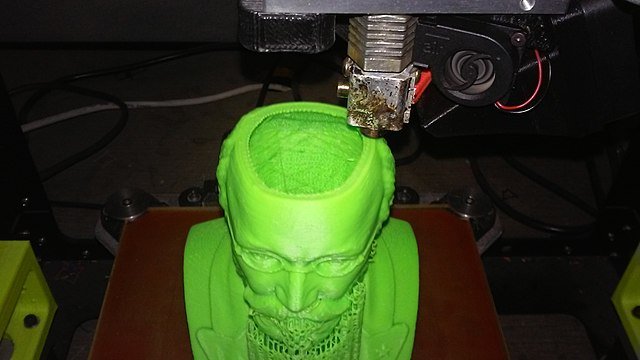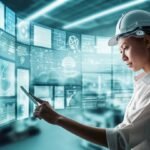
3D Printing, also known as additive manufacturing, is a rapidly growing technology that is revolutionizing the manufacturing industry worldwide and has the potential to emerge as a leading technology in numerous sectors shortly (Prashar et al., 2023).
Additive manufacturing also opens doors to implementing new business models. For instance, a designer can market their designs on the internet, and potential customers worldwide can purchase and print them, thereby obtaining customized products. Additionally, companies can design and build prototypes more quickly and at a lower cost.
Since its introduction, 3D printing has garnered immense interest among researchers and engineers to understand the manufacturing process and harness its vast application potential across various industrial sectors (Li and Pumera, 2021). Furthermore, with the advent of Industry 4.0 and the development of smart materials, 3D printing is poised to play a prominent role (Jandyal et al., 2022 and Prashar et al., 2023).
This article provides an overview of 3D printing, including principles, applications, materials, and challenges, among other topics, allowing you to grasp the potential of this technology and perhaps generate ideas for its application in your business activities. Moreover, in the bibliography section, you can find additional information to learn more about additive manufacturing.
What is 3D Printing?
3D Printing, also known as “additive manufacturing” or “digital manufacturing technology,” is a process of creating a three-dimensional object from a digital file. The object is built by adding material layer by layer, typically using a computer-controlled machine. Additionally, 3D printing is a rapid prototyping technology that encompasses a series of techniques (Nachal et al., 2019).
Chen et al., (2019) indicate that 3D printing comprises a series of advanced manufacturing technologies used to additively manufacture physical parts discretely point by point, line by line, or layer by layer from 3D CAD models digitally sliced into 2D cross-sectional layers.
On the other hand, it’s important to note that 3D printing and additive manufacturing are umbrella terms covering a broad range of processes for prototyping and creating three-dimensional structures from digital files (Jandyal et al., 2022).
The ISO/TC 261 Technical Committee defines additive manufacturing as a “group of technologies capable of joining materials to build a complete assembly from 3D model data developed using certain software tools, usually layer by layer, in contrast to subtractive manufacturing methods.”
History of 3D Printing
The history of 3D printing dates back to the 1980s when a group of researchers at the Massachusetts Institute of Technology developed a process called stereolithography. This process uses a laser to cure a liquid resin layer by layer, creating a solid object.
Since then, 3D printing technology has continued to rapidly evolve. Today, there are many different types of 3D printers available, each with its strengths and weaknesses. A detailed description of the history of additive manufacturing can be found in Prashar et al.’s study (2023).
What are the Benefits of Additive Manufacturing?
3D printing offers several benefits, including:
- Flexibility: Additive manufacturing allows for the creation of objects with complex shapes and sizes that would be difficult or impossible to manufacture with traditional methods.
- Customization: 3D printing enables the creation of custom objects to meet the specific needs of each user, allowing you to expand your product offerings based on your customers’ needs.
- Efficiency: Additive manufacturing can be a more efficient process than traditional manufacturing methods.
- Lower Environmental Impact: Khosravani and Reinicke (2020) emphasize that additive manufacturing can play a significant role in creating a sustainable manufacturing industry by substantially reducing material waste.
Principles of 3D Printing
There are two basic principles underlying additive manufacturing:
- Additivity: 3D printing adds material to create an object, rather than subtracting material as in traditional manufacturing processes.
- Layers: Additive manufacturing builds objects layer by layer.
Types of 3D Printing
There are many different types of additive manufacturing processes, each with its advantages and disadvantages. Some of the most common types of 3D printing include:
- Fused Deposition Modeling (FDM): FDM is a popular type of additive manufacturing that uses a heated nozzle to melt plastic filament, which is then deposited layer by layer to create an object.
- Stereolithography (SL): SL is the oldest type of additive manufacturing, characterized by using a laser to cure a liquid resin layer by layer to create a solid object. According to Nielsen et al. (2020), stereolithography is the most promising approach for the routine creation of microfluidic structures.
- Selective Laser Sintering (SLS): This is a rapid prototyping method that uses a laser to fuse powder material layer by layer to create a solid object.
- Powder Bed Fusion (PBF): This process uses a thin layer of powder to build a bed and an energy source (laser or electron beam) to fuse the powder according to the geometry.
- Binder Jetting (BJ): Instead of using lasers to bond, this process uses an inkjet printhead to bond the objects. It employs 2D inkjet printer technology and builds up layers, forming a 3D project.

If you want more detailed information on each type of additive manufacturing, along with their advantages and disadvantages, check the article by Jandyal et al. (2022) in the bibliography section.
Materials for 3D Printing
In recent years, the spectrum of printable materials has increased, allowing researchers to print a variety of materials, including living cells, modulus-changing polymers, and even space-grade metals (Karakurt and Lin, 2020).
In this regard, a wide variety of materials can be used for additive manufacturing, including plastics, metals, rubbers, and ceramics. The material selection will primarily depend on the intended use and the manufacturing method. Below, we describe the most common materials:
- Plastics: Plastics are the most common material used for additive manufacturing. They are relatively inexpensive and easy to work with. Mikula et al. (2021) describe the potential of using recycled plastic filaments in additive manufacturing.
- Metals: Metals are more expensive than plastics but offer greater strength and durability. Jandyal et al. (2022) report that commonly used metals include titanium, steel, aluminum, and some alloys.
- Rubber: Rubber or latex is an organic material that can also be employed in additive manufacturing. Research by Fekete et al. (2021) highlights the potential of using rubber, in combination with polylactic acid, for 3D printing applications, while Chen et al. (2019) combined silicone with rubber to create a flexible material.
- Concrete: Zhang et al. (2019) emphasize the potential of a type of concrete for 3D printing, stating that its performance indices, including workability, setting and hardening time, and mechanical properties, can be optimized by material selection and printing parameters.
- Ceramics: The use of ceramics for 3D printing is one of the latest trends (Chen et al., 2019). Ceramics are even more expensive than metals but offer excellent heat and chemical resistance, making them suitable for aerospace and medical industries.
What are the applications of 3D Printing?
Additive manufacturing technology is increasingly used for massive customization and the production of any kind of open-source designs in the fields of agriculture, healthcare, automotive industry, locomotive industry, and aviation industry (Shahrubudin et al., 2019), among others. Some of its key applications include:
Rapid Prototyping
3D printing can be used to create rapid prototypes of new products, saving time and money in the product development process. This was one of the earliest applications of additive manufacturing and is still used today to design, build, and test innovative products.
Manufacturing
Additive manufacturing can be used to manufacture finished products, especially for items that are difficult or expensive to produce using traditional methods. Espera et al. (2019) report that adapting new 3D printing technologies and manufacturing methods, specifically for printed electronics, has the potential to transform flexible electronics, wireless communications, efficient batteries, solid-state display technologies, etc.
Medicine
3D printing can be employed to create medical devices such as prosthetics and implants. Bio-printing is also being explored for use in tissue engineering and applications in regenerative medicine (Gopinathan and Noh, 2018). Haleem et al. (2020) highlight that 3D printing is a useful technology for manufacturing scaffolds fundamental in bone tissue engineering.

Aerospace
3D printing can be utilized to create aerospace components, such as complex parts of jet engines, spare parts, or restoration. Prashar et al. (2023) report that the ability to build an aircraft structure that exceeded expectations was made possible by the versatility of additive manufacturing technology, allowing balanced stress distributions resulting in improved performance.
Automotive
3D printing can be used to create automotive components, such as car parts or spare parts. However, its primary utility has been in rapid prototyping for real-world testing. With current trends in additive manufacturing technology, in the future, you might be able to “print” your vehicle at home according to your preferences and needs.
Consumer Goods
Additive manufacturing can be used to create consumer goods such as sneakers, toys, and jewelry. This application enables the development of new ventures. Some major international clothing brands, including Adidas, New Balance, Burberry, and ThreeAsFOUR, have invested in 3D printing technology to produce 3D-printed products (Nie et al., 2023).
Food Manufacturing
According to Nachal et al. (2019), additive manufacturing is an innovation with the potential to revolutionize food formulation and manufacturing processes. 3D printing will allow the design of foods according to the nutritional needs of the target audience, based on the assessment of input compositions.
Construction
Additive manufacturing is one of the innovations with the potential to revolutionize the construction industry. Zhang et al. (2019) and Hossain et al. (2020) report that 3D printing has the advantages of high construction efficiency, automating construction processes, reduced demand for labor, shortened construction time, and less construction waste. Xiao et al. (2021) also report that recently, large-scale structures have been printed using different cement-based materials and printing technologies.
Furthermore, Zhang et al. (2019) highlight that 3D-printed concrete “has great potential in practical applications, such as the construction of affordable housing in low-income countries, military bunkers when soldiers fight in nature, and complex constructions where formwork is difficult to manufacture.”
What are the challenges of 3D printing?
Additive manufacturing also presents a series of challenges, including:
- Cost: 3D printing can be a costly technology, especially for commercial applications.
- Speed: 3D printing can be a slow process, especially for large or complex objects.
- Accuracy: 3D printing can be an inaccurate process, especially for small or delicate objects.
- Technical Challenges: The adoption of additive manufacturing beyond prototyping requires solving technical challenges mainly related to materials and their processing.
What is the future of 3D printing?
3D printing is a rapidly developing technology with the potential to transform many industries. As the technology continues to evolve, it is likely to become more affordable, faster, and more accurate. This will open new opportunities for 3D printing in a wide range of applications beyond those mentioned in this article.
However, some challenges still need to be overcome by additive manufacturing. Rayna and West (2023) compared predicted capabilities with actual ones for the transformation enabled by 3D printing in six key areas: product innovation, massive customization, domestic manufacturing, distributed manufacturing, supply chain optimization, and business model innovation, suggesting opportunities for increased realism in future 3D printing research.
Prashar et al. (2023) report that additive manufacturing is promoting Industry 4.0 and plays a fundamental role in addressing some of the most critical needs of the fourth industrial revolution. In this sense, 3D printing is a type of digital manufacturing that is part of the Fourth Industrial Revolution environment.
On the other hand, Elder et al. (2020) emphasize that the synergistic integration of nanomaterials with 3D printing technologies can enable the creation of architecture and devices with an unprecedented level of functional integration. Harish et al. (2022) describe that 3D printing could offer unique solutions to vital issues in cultured meat production, particularly in the regulation of proteins, fats, and other nutritional contents, as well as providing a realistic texture.
How can I learn more about 3D printing?
There are several resources available to learn more about 3D printing, including online articles providing information on additive manufacturing, as well as online courses to delve into the concepts presented here.
The first step is to review the documents provided in the bibliographic references of this article.
Conclusion
3D printing is a versatile technology with a wide range of applications. As the technology continues to develop, it is likely to have an even greater impact on the manufacturing industry.
The fields of application of additive manufacturing are expanding hand in hand with the development of new manufacturing methods and the creation of new printing materials. This suggests that this technology will become one of the mainstays in the context of industrial manufacturing, also opening the opportunity to develop new business models to meet the particular needs of customers quickly and at a lower cost.
On the other hand, 3D printing is an important technology in the context of Industry 4.0. Therefore, you should evaluate the adoption of it based on your company’s goals and the level of digitization your company has.
Bibliographic References
Chen, Z., Li, Z., Li, J., Liu, C., Lao, C., Fu, Y., … & He, Y. (2019). 3D printing of ceramics: A review. Journal of the European Ceramic Society, 39(4), 661-687.
Chen, Q., Zhao, J., Ren, J., Rong, L., Cao, P. F., & Advincula, R. C. (2019). 3D printed multifunctional, hyperelastic silicone rubber foam. Advanced Functional Materials, 29(23), 1900469.
Elder, B., Neupane, R., Tokita, E., Ghosh, U., Hales, S., & Kong, Y. L. (2020). Nanomaterial patterning in 3D printing. Advanced Materials, 32(17), 1907142.
Espera, A. H., Dizon, J. R. C., Chen, Q., & Advincula, R. C. (2019). 3D-printing and advanced manufacturing for electronics. Progress in Additive Manufacturing, 4, 245-267.
Fekete, I., Ronkay, F., & Lendvai, L. (2021). Highly toughened blends of poly (lactic acid)(PLA) and natural rubber (NR) for FDM-based 3D printing applications: The effect of composition and infill pattern. Polymer Testing, 99, 107205.
Gopinathan, J., Noh, I. Recent trends in bioinks for 3D printing. Biomater Res 22, 11 (2018). https://doi.org/10.1186/s40824-018-0122-1
Haleem, A., Javaid, M., Khan, R. H., & Suman, R. (2020). 3D printing applications in bone tissue engineering. Journal of clinical orthopaedics and trauma, 11, S118-S124.
Harish K. Handral, Shi Hua Tay, Weng Wan Chan & Deepak Choudhury (2022) 3D Printing of cultured meat products, Critical Reviews in Food Science and Nutrition, 62:1, 272-281, DOI: 10.1080/10408398.2020.1815172
Hossain, Md. Aslam, Altynay Zhumabekova, Suvash Chandra Paul, and Jong Ryeol Kim. 2020. “A Review of 3D Printing in Construction and its Impact on the Labor Market” Sustainability 12, no. 20: 8492. https://doi.org/10.3390/su12208492
Jandyal, A., Chaturvedi, I., Wazir, I., Raina, A., & Haq, M. I. U. (2022). 3D printing–A review of processes, materials and applications in industry 4.0. Sustainable Operations and Computers, 3, 33-42.
Karakurt, I., & Lin, L. (2020). 3D printing technologies: techniques, materials, and post-processing. Current Opinion in Chemical Engineering, 28, 134-143.
Khosravani, M. R., & Reinicke, T. (2020). On the environmental impacts of 3D printing technology. Applied Materials Today, 20, 100689.
Li, J., & Pumera, M. (2021). 3D printing of functional microrobots. Chemical Society Reviews, 50(4), 2794-2838.
Mikula, K., Skrzypczak, D., Izydorczyk, G. et al. 3D printing filament as a second life of waste plastics—a review. Environ Sci Pollut Res 28, 12321–12333 (2021). https://doi.org/10.1007/s11356-020-10657-8
Nachal, N., Moses, J.A., Karthik, P. et al. Applications of 3D Printing in Food Processing. Food Eng Rev 11, 123–141 (2019). https://doi.org/10.1007/s12393-019-09199-8
Nie, J., Xu, X., Yue, X., Guo, Q., & Zhou, Y. (2023). Less is more: A strategic analysis of 3D printing with limited capacity. International Journal of Production Economics, 258, 108816.
Nielsen Anna V., Michael J. Beauchamp, Gregory P. Nordin, Adam T. Woolley. 3D Printed Microfluidics. Annual Review of Analytical Chemistry 2020 13:1, 45-65.
Prashar, G., Vasudev, H. & Bhuddhi, D. Additive manufacturing: expanding 3D printing horizon in industry 4.0. Int J Interact Des Manuf 17, 2221–2235 (2023). https://doi.org/10.1007/s12008-022-00956-4
Rayna, T., & West, J. (2023). Where digital meets physical innovation: Reverse salients and the unrealized dreams of 3D printing. Journal of Product Innovation Management.
Shahrubudin, N., Lee, T. C., & Ramlan, R. J. P. M. (2019). An overview on 3D printing technology: Technological, materials, and applications. Procedia Manufacturing, 35, 1286-1296.
Xiao, J., Ji, G., Zhang, Y., Ma, G., Mechtcherine, V., Pan, J., … & Du, S. (2021). Large-scale 3D printing concrete technology: Current status and future opportunities. Cement and Concrete Composites, 122, 104115.
Zhang, J., Wang, J., Dong, S., Yu, X., & Han, B. (2019). A review of the current progress and application of 3D printed concrete. Composites Part A: Applied Science and Manufacturing, 125, 105533.
Editor and founder of “Innovar o Morir” (‘Innovate or Die’). Milthon holds a Master’s degree in Science and Innovation Management from the Polytechnic University of Valencia, with postgraduate diplomas in Business Innovation (UPV) and Market-Oriented Innovation Management (UPCH-Universitat Leipzig). He has practical experience in innovation management, having led the Fisheries Innovation Unit of the National Program for Innovation in Fisheries and Aquaculture (PNIPA) and worked as a consultant on open innovation diagnostics and technology watch. He firmly believes in the power of innovation and creativity as drivers of change and development.





